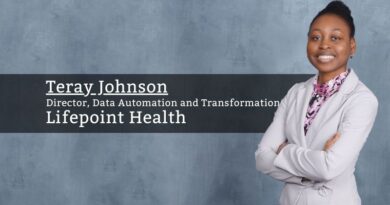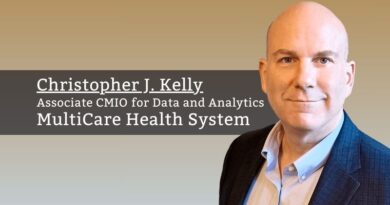Enhancing Health and Care Through the Power of Clinical Decision Support Systems
By Romil Chadha, CMIO, University of Kentucky Healthcare
What is CDSS?
Clinical Decision Support Systems (CDSS) are sophisticated tools that utilize data within electronic health records (EHRs) to help healthcare workers make more reasonable clinical decisions. These systems provide timely, relevant information and patient-specific recommendations to enhance healthcare delivery and, thus, health. By integrating a wealth of medical knowledge, patient data, and other pertinent information, CDSS tools assist in diagnosing, prescribing, and managing patient care. They function as a second set of eyes, offering critical insights and alerts to ensure patients receive optimal, evidence-based care. CDSS ranges from simple notifications to comprehensive care plans, aiding decision-making processes and improving overall healthcare outcomes.
Advantages of CDSS
CDSS boasts numerous benefits that streamline healthcare delivery. They improve efficiency by quickly processing patient data and generating pertinent health insights, enabling faster decision-making. CDS tools facilitate earlier detection and screening of diseases, leading to timely interventions. They standardize diagnosis and treatment protocols, ensuring consistent and accurate care delivery. Importantly, CDS systems help prevent adverse outcomes by identifying potential risks and contraindications, thus enhancing patient safety. Follow-up management is bolstered through reminders and alerts, promoting adherence to care plans. Economically, CDS contributes to cost reductions and increases convenience by minimizing unnecessary tests and procedures, optimizing healthcare resource utilization, and fostering a more streamlined, effective healthcare environment.
CDS can only enhance right actions and block wrong ones if powered by quality input and diligent effort.
Level of Restrictiveness
The level of restrictiveness is the redundancy built by CDSS, which slows the clinician to rethink. The most restrictive CDS makes specific actions impossible without a significant cognitive effort, ensuring adherence to critical pathways. Less restrictive systems provide guidance based on the patient’s data, acting as a nudge toward best practices without stringent enforcement. These systems suggest actions but leave room for professional judgment. The least restrictive CDS integrates consensus-driven protocols into the workflow, so certain best practices become automatic and unobtrusive, seamlessly guiding healthcare workers without imposing decision points. This gradation ensures that CDSS can be tailored to the needs of the healthcare setting, balancing between directive and supportive roles.
Target Domain
We must consider which level the CDSS will impact: the population, encounter, or precision level. They influence long-term patient population outcomes by utilizing data from patient registries and focusing on care transitions and outcomes-based care. As a typical application, CDSS offers real-time assistance to physicians and nurses at the individual encounter level. It includes reminders or care suggestions during clinical interactions, addressing potential drug-disease, drug-allergy, and drug-drug interactions. CDSS incorporates individual characteristics like demographics, clinical history, and genetic/genomic information at a precision level, tailoring interventions to each patient’s unique profile. Examples include adjustments in care based on specific metrics like BMI, enhancing the personalization and effectiveness of healthcare delivery.
Five Rights
The efficacy of CDSS hinges on fulfilling the ‘five rights’: delivering the right information to the right people in the right format, through the right channel, and at the right time. We must consider these criteria for effective decision-making in healthcare. The right information means pertinent, evidence-based data tailored to the clinical scenario. The right people refer to ensuring that those in a position to act upon the information receive it. The right format denotes presenting information in a user-friendly manner that facilitates comprehension and action. The right channel uses the most effective means to deliver the information through alerts, reminders, or reports. Lastly, timing is critical; we should provide information at the right time in the care process to positively influence outcomes.
Reducing Noise
The primary role of Clinical Decision Support (CDS) is to reduce noise in clinical settings, thereby enhancing decision-making. Human decision-making is fraught with complexities, including cognitive biases and susceptibility to behavioral economic factors. CDSS helps to streamline the influx of information, filter out irrelevant data, and present the most pertinent facts. This support is crucial in high-stakes environments where healthcare professionals make numerous critical decisions daily. By providing clear, evidence-based recommendations, CDS tools help mitigate biases and improve the consistency and quality of patient care, ensuring decisions are informed and data-driven.
Challenges
Despite their benefits, CDSS face challenges like alert fatigue, where too many alerts can desensitize users, and redundancy, leading to potential oversight of critical information. Burnout among healthcare workers, exacerbated by information overload and system complexities, further complicates CDSS implementation. CDSS makes healthcare professionals more prone to automation bias and an inclination to trust and excessively rely on automated systems. Additionally, the effectiveness of CDS can be undermined by insufficient or inaccurate data, highlighting the need for robust, up-to-date information to inform decisions adequately.
Governance and Evaluation
Effective governance and ongoing evaluation are paramount to ensure CDSS fulfill their potential. Regular assessment of CDS functionality, user satisfaction, and clinical outcome impact is necessary to refine and optimize these systems. This process includes analyzing how CDS tools affect clinical practice, patient outcomes, and healthcare efficiency. Governance mechanisms must be in place to oversee CDS implementation, ensuring alignment with evidence-based practices and addressing ethical, legal, privacy, risk, and value of alert concerns. Continuous feedback loops between end-users and developers are crucial to adapt CDS systems to evolving healthcare needs and technological advancements.
Conclusion
Reflecting on the evolution of Clinical Decision Support (CDS), it’s notable that two decades ago, Bates et al. penned a seminal paper outlining the Ten Commandments for Effective Clinical Decision Support to actualize evidence-based medicine. Their insights have shaped the development and integration of CDS systems in healthcare, emphasizing the importance of user-centered design, evidence integration, and measurable outcomes. As CDS continues to evolve, its potential to transform healthcare remains immense, promising a future where data-driven, patient-centered care is the norm.



